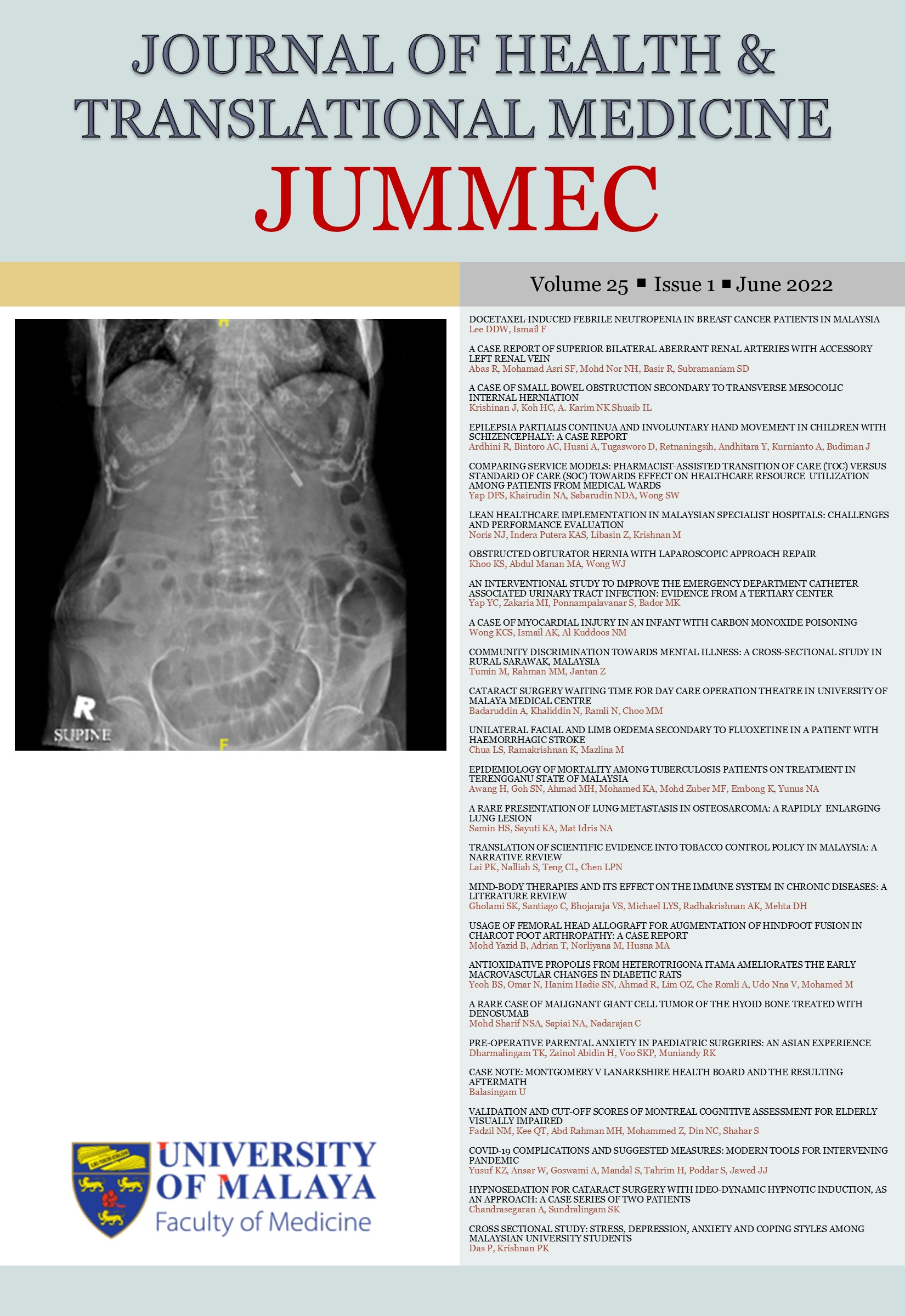COVID-19 COMPLICATIONS AND SUGGESTED MEASURES: MODERN TOOLS FOR INTERVENING PANDEMIC
Received 2021-10-23; Accepted 2022-02-04; Published 2022-05-02
DOI:
https://doi.org/10.22452/jummec.vol25no1.23Abstract
Viral diseases are the most devastating health concern worldwide. Outbreaks of coronavirus (CoVs)-related acute
respiratory diseases are responsible for the massive health/socio-economic breakdown in the last two decades
including the Severe Acute Respiratory Syndrome (SARS) and Middle East Respiratory Syndrome (MERS), the third
reported spillover SARS-CoV-2 from an animal coronavirus to humans. After the H1N1 pandemic influenza (2009),
SARS-CoV-2 (novel-beta coronavirus) causing COVID-19 has stretched across 215 countries in 5 major continents with 200,523,190 confirmed cases (4 August 2021; https://www.worldometers.info/coronavirus/). COVID-19 patients had cough, fever, dyspnea, headache, and respiratory failure, as well as shock, acute respiratory distress syndrome, and sepsis in severe instances. Independent of two preceding epidemics, SARS (2002) and MERS (2012), a knowledge
gap about the emerging medical manifestations as well as complications of SARS-CoV-2 (2019-2020) infections in
humans must be filled, with a focus on immunological complications and computational genomics for forecasting/
preparedness for a similar outbreak in the future. This paper aims to address aspects of this gap.
Downloads
Downloads
Published
Issue
Section
License
All authors agree that the article, if editorially accepted for publication, shall be licensed under the Creative Commons Attribution License 4.0 to allow others to freely access, copy and use research provided the author is correctly attributed, unless otherwise stated. All articles are available online without charge or other barriers to access. However, anyone wishing to reproduce large quantities of an article (250+) should inform the publisher. Any opinion expressed in the articles are those of the authors and do not reflect that of the University of Malaya, 50603 Kuala Lumpur, Malaysia.


